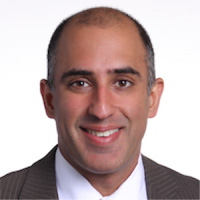APRNs in Retail-Based Clinics – What to Know
Find NP Schools
For the latest academic year, we have over 180 NP schools in our database and those that advertise with us are labeled “sponsor”. When you click on a sponsoring school or program, or fill out a form to request information from a sponsoring school, we may earn a commission. View our advertising disclosure for more details.
Retail-based clinics (also known as convenient care clinics, retail clinics, and limited services clinics) provide basic care services in pharmacies, grocery stores, and “big box” stores, such as Target and Walmart.
There are about 2,000 retail health clinics (RHCs) throughout the country that provide health services as of 2020 data. Most are in southern and south Atlantic states, and about 97 percent are in metropolitan statistical areas (which have at least one urbanized area with a population of 50,000 or more) rather than in less densely populated areas.
In 2019, one in four children and nearly three in ten adults visited a retail-based clinic or urgent care center in the US.
These clinics are generally staffed by nurse practitioners (NPs) and/or physician assistants, who treat patients on an appointment or a walk-in basis.
Within the retail-based clinic setting, NPs can diagnose and treat common health problems, such as minor infections and injuries, triage patients, and refer them to the appropriate practitioners, if necessary.
According to the American Nurses Association (ANA), retail-based care has a positive role to play in promoting access to care in underserved areas and in addressing health disparities. They can also help NPs build their careers.
However, these clinics are somewhat controversial among NPs and healthcare policy experts.
Meet the Experts

Ateev Mehrotra, MD
Dr. Ateev Mehrotra is a professor of healthcare policy and medicine at Harvard Medical School and a hospitalist at Beth Israel Deaconess Medical Center. He earned his MD from the University of California, San Francisco and his MS in epidemiology from Harvard University.
Much of Dr. Mehrotra’s research is focused on delivery innovations such as retail clinics and their impact on quality, costs, and access to healthcare.

John Silver, PhD
Dr. John Silver is an RN, healthcare policy expert, and educator. He holds an MSN with a focus on health policy and ethics and a PhD in comparative studies to search for solutions to problems within the US healthcare system. In 2020, Dr. Silver co-founded the advocacy group Nurses Transforming Healthcare to create a patient-focused system with safe staffing levels.
Dr. Silver writes and speaks internationally about the U.S. healthcare system and transforming ethics in healthcare and advocates for full practice authority of NPs.
The Origins of Retail-based Clinics
Retail-based clinics are a relatively new addition to the U.S. healthcare landscape, with the first locations popping up in 2000. By 2010, the number rose to close to 1,200. Now, there are about 2,000 in total.
According to Ateev Mehrotra, professor of healthcare policy and medicine at Harvard Medical School, the emergence of retail clinics was really driven by two main factors: “One, which continues to be [relevant] in 2023, is that many patients struggle to get a convenient visit with their primary care physician for a new problem and the wait times are too long.”
The average wait time for a physician appointment in the US is 26 days, up from 24 days in 2017, according to a survey of 15 metro markets published by the physician search firm Merritt Hawkins.
Long appointment wait times are primarily driven by a shortage of physicians, primary care doctors, and other healthcare workers.
Depending on one’s location and the state of understaffing of local healthcare facilities, retail-based care can be a faster alternative for minor, non-life-threatening infections and injuries rather than going to an ER for quick treatment or waiting weeks to see a primary care provider.
For example, there is a high concentration of retail-based clinics in Maryland, where wait times are the longest in the country at nearly four hours on average. For example, CVS has MinuteClinics in more than 30 municipalities throughout the state.
Additionally, some patients appreciate retail-based clinics’ fixed and transparent pricing model. A wellness visit at Walmart is currently $90.
The second reason comes down to profit opportunity; there’s a lot of money to be made in the country where healthcare is the most expensive in the world: “I think there was also an observation by entrepreneurs and large companies that this was an unexploited market that could give them a foothold in healthcare,” Dr. Mehrotra adds.
And as John Silver, PhD, an RN and healthcare policy expert, points out, many big box retailers already had nationwide infrastructures in place: their stores.
“There’s the advantage, I think, of being well-distributed. So, one of the complaints is that healthcare is not available in tons of communities… but you can bet there’s a Walmart somewhere around there,” Dr. Silver says. “CVS, Walgreens, or whatever the corporation is, they saw [healthcare] as a moneymaker.”
Pros and Cons of Working at Retail-based Clinics
According to Dr. Silver and Dr. Mehrotra, working at a retail-based clinic can be a mixed bag. These are some pros and cons of being employed by a retail-based clinic.
The Positives
Slower pace. While there is no research on burnout rates specific to healthcare workers at retail-based clinics, it’s possible that rates could be lower compared to other healthcare workplaces, such as critical care environments.
“Working in a retail clinic is going to be a lot less stressful than working in hospitals or specialty services where they’re just going to run you ragged,” Dr. Silver says.
For NPs experiencing burnout in understaffed facilities, working at a retail-based clinic with non-emergency patients may have some appeal. However, it should be noted that retail-based clinics are not immune from being understaffed and different clinics will have different caseloads.
Flexibility. Working at a retail clinic can also offer some schedule flexibility, Dr. Mehrotra adds.
According to Glassdoor reviews written by NPs who work at CVS MinuteClinics, employees report being given their schedules with weeks of notice, and on major holidays, hours are reduced, or clinics are closed.
Additionally, Walmart notes on its health services website that hours of operation are typically between 8 am and 8 pm on weekdays and limited on weekends, so NPs employed by the corporation don’t have to work night shifts like they do at hospitals.
“That [could be] particularly helpful if you have a family or you have an older adult you’re caring for,” Dr. Mehrotra says.
Employees tend to agree: “Full time is 30 hours per week with full benefits. Do not get abused with hours since pay is hourly. Allows for good work-life balance,” a MinuteClinic NP writes on Glassdoor.
Autonomy. Retail-based clinics can be desirable environments for NPs who wish to have the sense of autonomy that comes with running their own practice.
This sentiment is supported by associations like the ANA, which purported in a statement that: “NPs’ proficiency in providing health education and prevention services means they can be skilled leaders, managers, and primary care providers in retail-based clinics” in a statement published in 2020.
The Negatives
Disjointed care. Provider groups, such as the American Medical Association, have raised concerns about quality-of-care issues with retail-based clinics, namely the potential of disrupting existing patient-physician relationships and undermining health outcomes.
While retail-based clinics are not intended to be used for primary care—and shouldn’t be—in healthcare worker shortage areas, patients may end up using retail-based clinics as their main method of receiving healthcare out of necessity. This results in patients who are not getting proper preventative healthcare.
From the practitioner’s point of view, the retail-based model may leave something to be desired due to the absence of long-term relationships with patients and an inability to see their progress over time.
Environment. There’s also a matter of working in a retail environment, which can be uncomfortable, or at least odd, to some patients and providers.
“Think about the last time you went to a food store or a drugstore. Part of the process of checking people out is doing physical exams so you can see what’s going on. Well, how comfortable are you going to be doing [a physical exam] in the middle of a drug store?” Dr. Silver says.
Glassdoor reviewers of CVS MinuteClinics note other quirks of working in retail stores, such as dirty restrooms and stores’ bag-checking policies for theft prevention, which also apply to healthcare staff.
Lack of support. While retail clinics can give NPs a sense of independence, the other side of the coin can be a sense of isolation: “It’s not like working in a clinic where you’ve got a lot of other clinicians you can bounce ideas off of,” Dr. Mehrotra says.
According to accounts from NPs who work at MinuteClinics, this can be a negative aspect of the working environment.
“You work alone—there’s no one to consult down the hall. Incredibly poor physician collaboration,” one employee writes on Glassdoor.
“There is no receptionist or LPN; the provider spends an inordinate amount of time checking patients in and verifying insurance benefits,” another writes.
Limited scope of practice. According to the American Association of Nurse Practitioners, “The functions of the [retail-based] clinic should be based on the NP’s full scope of practice and should not limit the ability of NPs to conduct appropriate assessments and provide.”
However, some NPs who work at retail-based clinics say this standard is not being upheld.
“Nurses at the clinic are not being utilized to their full scope of practice; Minute Clinic severely limits what they are allowed to do as they have their own ‘scope of practice’ that is more restrictive than the law,” one MinuteClininc NP at Glassdoor reviewer writes.
However, it should be noted that other NPs working at different MinuteClinics report positively regarding their scope of practice, so it’s likely that clinicians’ experiences vary from location to location and from state to state.
The Future of Retail-based Clinics
One of the major draws of retail-based clinics for some NPs is the sense of independence associated with the setting. However, scope of practice laws for NPs vary from state to state. This means an NP’s ability to work autonomously—including in retail-based settings—depends on their residence.
The ongoing movement to grant NPs full practice authority, which concerns the ability to diagnose patients, write prescriptions, and manage treatments, has been underway since the 1970s. It is largely driven by a widespread lack of access to physicians.
Unsurprisingly, healthcare access is especially limited in states with more restrictive scope of practice laws for NPs, where the only option for primary care is through a physician.
As Dr. Silver says, “It would help make these [retail-based clinic] services better to have fully empowered practitioners in place.”
Steady progress has been made over the years, and now over half of the states offer full authority for NPs—a landmark achieved in 2022.
Meanwhile, the proportion of care delivered by NPs has grown. Between 2013 and 2019, the percentage of patient visits delivered by NPs and physician assistants versus physicians increased from 14 percent to just over 25 percent.
However, there is still a long road ahead for proponents of full practice authority for NPs, with resistance coming from Texas, California, and mid-Atlantic states.
This brings up an intriguing potential trend observable concerning retail-based clinics. A 2017 paper that focused on three states with varying levels of scope of practice (New Jersey, Pennsylvania, and Maryland) found there was an association between increasing NPs’ scope of authority and retail-based clinic growth.
Its spotlighted example was Pennsylvania circa 2007. At the time, 10 percent of adult Pennsylvanians reported lacking a primary healthcare provider. Residents were also 11 percent more likely than all other Americans to use the emergency room.
Following the passage of legislation that relaxed practice regulations for NPs, the state saw a significant growth rate in net retail clinic openings per capita. A similar trend was observed in Maryland.
While it’s difficult to say exactly how influential full practice authority laws are on big box stores—as the opening of new retail clinics could also be related to unrelated market forces—it does seem that retail-based care models are poised to grow, regardless.
In 2024, CVS is expanding its MinuteClinic offerings while Walmart plans to open 28 new Walmart Health Center locations.
While retail-based clinics can be fairly criticized for their limitations and are not a panacea for healthcare access problems riddling communities across the US, the model provides an interesting alternative to traditional hospital- or clinic-based work for burgeoning NPs.
For some NPs, retail-based clinics may offer the ideal setting to utilize their clinical skills more sustainably while helping patients in the most limited care access areas get the basic care they need.

Nina Chamlou
WriterNina Chamlou is an avid writer and multimedia content creator from Portland, OR. She writes about aviation, travel, business, technology, healthcare, and education. You can find her floating around the Pacific Northwest in diners and coffee shops, studying the locale from behind her MacBook.